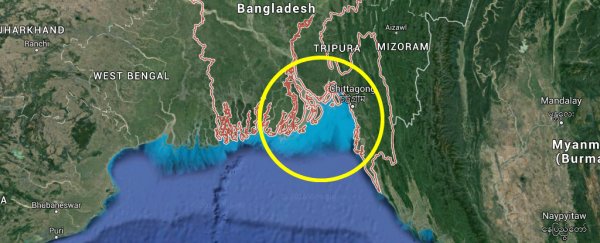Researchers from James Cook University in Australia have found evidence of huge seismic activity below what is now Tanzania around 25,000 years ago.
The discovery will not only help scientists to better predict the risk of future earthquakes, but will also help them figure out how the ground will respond when they occur.
"We can now use this to evaluate how the ground would deform in a modern earthquake," Eric Roberts, the James Cook University geologist who supervised the research, said in a press release. "This is important because the approach is inexpensive and can be used to model how structures might be affected by future events, providing a valuable tool in hazard assessment."
Roberts and co-researcher Hannah Hilbert-Wolf found evidence of fluidisation and liquefaction - where soil behaves like quicksand - occurring at the time of the earthquake. And it was so powerful that it pushed a bus-sized block of sandstone 15 metres towards the surface.
"We have this window into the past that we can see how a sandy lake substrate in this area responded to the really intense earthquake shaking," Hilbert-Wolf told the AAP.
The extent of this liquefaction and fluidisation is unprecedented in continental settings, and raises the question of just how well the rapidly growing cities in Tanzania would survive if a similarly sized quake hit. "This could be a major concern for the growing urban population of East Africa, which has similar tectonic settings and surface conditions," said Hilbert-Wolf.
The same area was hit by the most powerful African earthquake of the 20th century in 1910, when there were 7.5 million people living in Tanzania. By 2050, it's expected that there will be 130 million people living in Tanzania, in mostly constructed urban settings, which leads to new fears about what the impact of a similar quake in the region would be.
The new research, which has been published in PLOS ONE, will help to provide further insight what type of damage a future earthquake is likely to do, and help to better prepare for the threat, without the need for costly monitoring equipment.
"What we have shown is that in developing countries in particular, which may lack extensive seismic monitoring, the rock record can be used to not only investigate the timing and frequency of past events, but also provide important insights into how the ground will behave in certain areas to seismic shock," said Hilbert-Wolf.
Love science? Find out more about studying at James Cook University.
